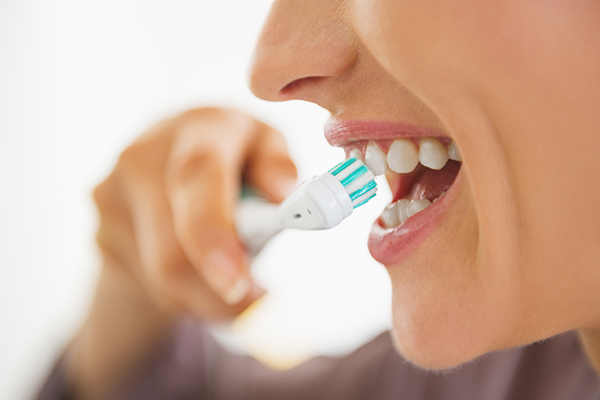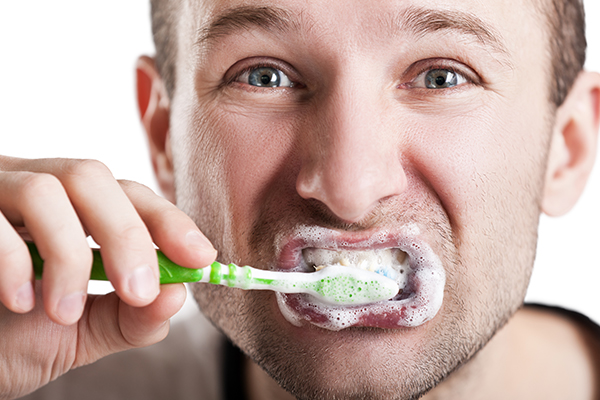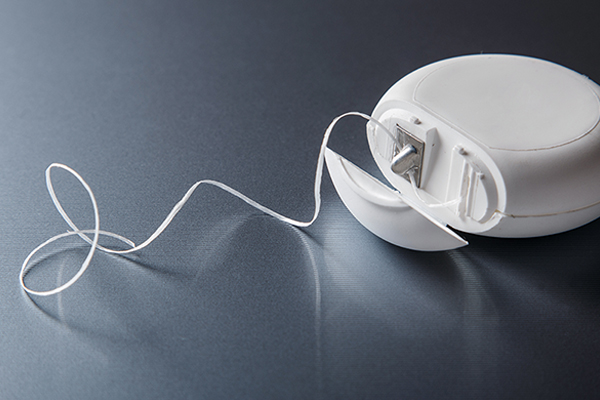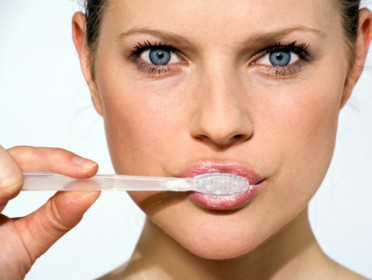Brushing your teeth might seem simple enough: after all, you’ve been doing it almost your entire life. But if your technique needs improvement, you might not be getting your teeth as clean as they should be—or you could even be doing damage to them.
Luckily, it’s not too hard to correct the little mistakes you make when you’re brushing, and to keep your teeth cleaner for a healthier, brighter smile.
How long you should brush for
One of the mistakes most people make when brushing their teeth is simply not brushing for long enough.
You should brush your teeth for a whole two minutes, every time you brush—twice a day or more.
That might sound like a lot, especially when you’re in a hurry, but paying good attention to areas that are easily forgotten or hard to reach will pay off almost instantly—with fresher breath and fewer cavities.

Try timing your brushing with a clock or a stopwatch, until you’re accustomed to your new two-minute routine. Before you know it, it’ll be your new normal, and it won’t feel like you’re spending any extra time brushing.
What you should brush
Your mouth isn’t just full of teeth. There are a lot of other surfaces in there to pay attention to, which are just as important in maintaining a healthy smile. You should take care to pay enough attention to areas that are hard to reach, including your back teeth, the spaces in between your rear molars, and fillings and crowns—because that’s where food will hide, and you’ll develop cavities.
A good routine that will ensure you clean all of your mouth each time your brush will include:
- The front-facing surfaces of your upper and lower teeth
- The rear-facing surfaces of your upper and lower teeth
- The top surfaces of all your teeth (the bits you use to chew)
- Your gumlines
- The inside of your cheeks
- Your tongue
Paying attention to all these surfaces is the best way to remove bacteria, which will help freshen your breath as well as prevent cavities.
How you should brush
Even the most diligent teeth-brushers can make some big mistakes when they’re brushing. Perhaps the biggest is brushing too hard, with the wrong style of stroke.
Tilt your toothbrush at 45 degrees, and try to make a sweeping motion away from the gumlinewhen you’re brushing along the edges. When you’re brushing your teeth, tongue, and cheeks, use short, gentle strokes back and forth.
What toothbrush you should use
Most dentists will agree that soft-bristled toothbrushes are best for most people. Using a toothbrush with bristles that are too firm will damage your teeth and gums in the same way as pressing too hard while you’re brushing. It’s also best to use a toothbrush with a small head, as they’re better able to reach the difficult areas in your mouth, including your back molars.

Many dentists will also recommend electric toothbrushes, for those who have difficulty brushing, or those with poor brushing techniques. Electric toothbrushes have small, rotating and vibrating heads that remove a good deal of plaque and bacteria, and they can prevent you from pressing too hard while you’re brushing.
What toothpaste you should use
There are many kinds of toothpastes available to suit all sorts of special dental conditions. If you have issues with sensitive teeth and gums, stained teeth, gingivitis or cavities, there will be toothpastes specially formulated to help treat these problems. Although these kinds of toothpastes are readily available at any supermarket or pharmacy, it’s always best to ask your dentist what kind of toothpaste they recommend for your particular dental health issues.
Most dentists will also recommend toothpastes with fluoride, which most do have, but there are fluoride-free toothpastes available.

Using floss
Brushing alone won’t perfectly maintain your teeth. Flossing is also an essential part of your daily teeth-cleaning regime, as it manually removes food particles and plaque that has gathered in between your teeth to cause bad breath and decay. It can also significantly reduce staining between your teeth, making them look whiter and brighter—which is another great reason to incorporate it into your routine twice a day.
To floss your teeth, use about 50cm of floss wrapped around your middle or index fingers, and guide it gently between your teeth to make a sawing motion up and down the spaces.

Be careful not to pull it too hard onto the gum in between your teeth, but be sure to get far enough down that you’re removing all the particles from the tiny spaces at the base of the teeth. And if you’re removing a lot of plaque and food, use plenty of fresh pieces of floss to do your whole mouth.
Using mouthwash
Adding mouthwash into your dental care routine can help to prevent bad breath and the build up of plaque. To use most mouthwashes, swish about one capful around in your mouth for about 30 seconds, and then avoid eating or drinking for half an hour afterwards.
And if you can, try to avoid using mouthwash directly after you’ve brushed. Even mouthwashes with fluoride can wash away the protective, concentrated levels of fluoride left on your teeth from your toothpaste. You could choose another time—perhaps after lunch, when you don’t usually brush—to use mouthwash.
It’s worth the time and effort to pay a bit more attention to brushing your teeth. After all, it could save you a lot of pain, complex dental work, and money—as well as keep your smile looking nicer. It’s not too difficult to improve your brushing technique, but for any questions you’ve got about your dental health, Proactive Dental are available with the right experience and advice. Contact us anytime to make a booking for a check up, or for other dental care information, and we’ll be happy to help you.

